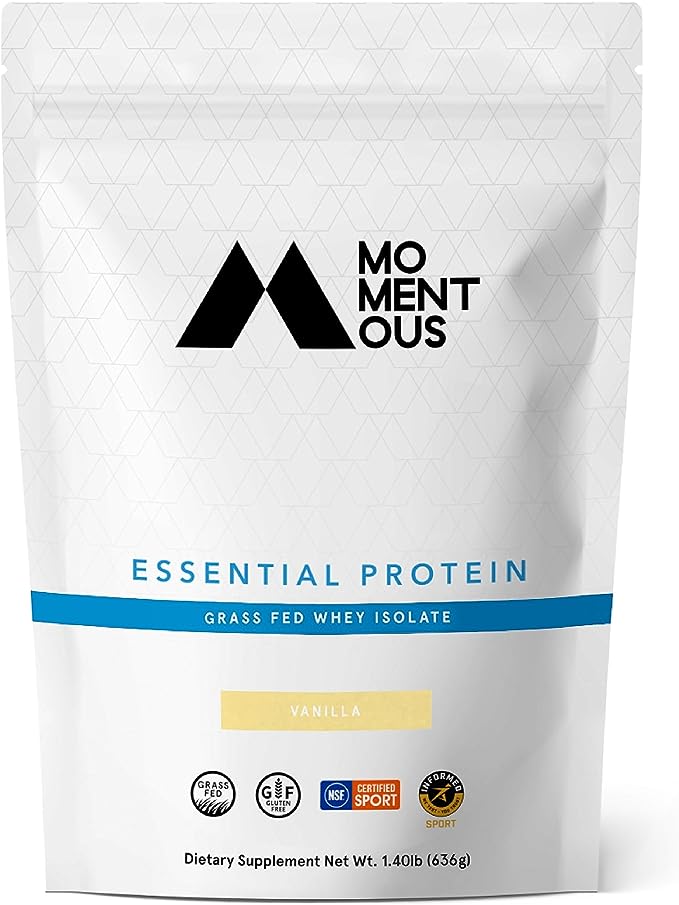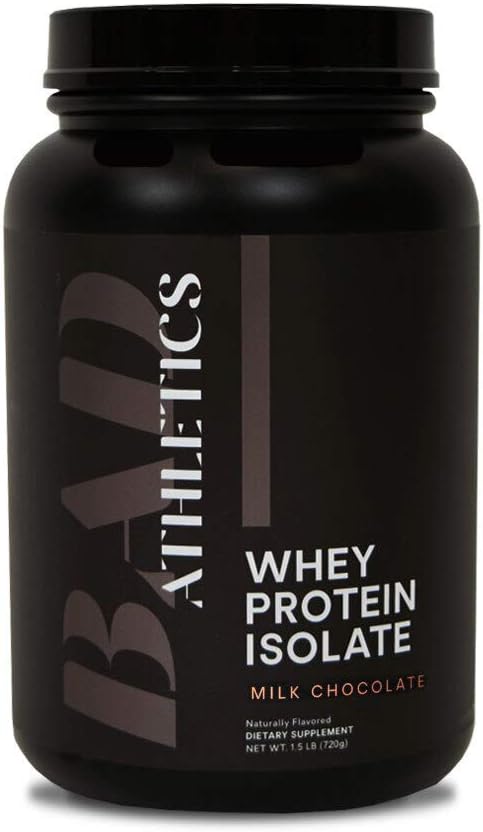In the world of fitness and nutrition, protein is often hailed as the kingpin of macronutrients. Whether you’re a seasoned athlete striving for peak performance or someone seeking to bolster overall health, protein takes center stage in processes like muscle recovery, immune support, and various physiological functions.
My journey with protein powder started as many stories do, at the grocery store with a newly found sense of “it’s time to get in shape.” That quick decision was an expensive lesson in, “don’t buy things you don’t know how to properly utilize.” Fortunately for me, becoming a professional athlete led me down the path of understanding when and how to use supplemental protein.
I wish I could hand you a step-by-step guide but if you’re serious about your goals, there is no one-size-fits-all answer. What is right for one person, might not be the best choice for someone else.
Whey and pea protein powders are two of the most popular choices. Let’s delve into the nutritional benefits of whey protein versus pea protein powder and help you make an informed choice that aligns with your dietary and fitness goals.
At first glance, these two types of protein powder may appear identical but don’t be fooled by their similarities. Protein powder operates at the molecular level within the body, making the choice between them contingent on when and why you’re opting for protein supplementation. (*This article won’t delve into the complex intricacies of food allergies, but you should always consult a physician if you’re experiencing dietary issues or treating a medical condition.)
At the molecular level, we’re talking about two different types of cells.
Digesting Animal Cells:
Animal cells are known for their rich protein content, and our digestive system has evolved to efficiently break down these proteins into amino acids. Digesting animal cells begins in the stomach, where gastric acid and enzymes like pepsin and trypsin work together to denature and break down the proteins present. This process prepares the proteins for digestion in the small intestine.
Once in the small intestine, specialized enzymes continue the breakdown of proteins, fats, and other nutrients.
Digesting Plant Cells:
Plant cells on the other hand have a unique composition, primarily consisting of cellulose, a complex carbohydrate. Humans lack cellulase, an enzyme required to break down plant cell walls. This poses a challenge for digesting plant cells directly. However, since plant cells contain valuable nutrients, including protein, we have developed enzymes like amylase to enhance our accessibility to absorb plant nutrients.
If you have a sensitivity to raw vegetables, it may simply be that your body is struggling to break through the plant wall. Cooking can help soften plant cell walls and make their nutrients more accessible. Our small intestine then breaks down these complex carbohydrates into simpler sugars for absorption.
Ok. You might be asking: What does this have to do with protein powder and how does this information help you?! Different fitness goals have different nutritional requirements; whey protein may be a better option in one situation while plant protein will be more beneficial in others.
In a 2019 study(1), participants followed a training routine and consumed a protein supplement consisting of 40g of blended protein. The results suggested that the composition and timing of protein intake is more important than the total amount of protein consumed.


Whey Protein: A Powerhouse of Amino Acids
Whey is derived from milk during the cheese-making process and is one of the most bioavailable and rapidly absorbed sources of protein. It is a complete protein source, meaning it contains all nine essential amino acids necessary for building and repairing tissues. This makes it an excellent choice for promoting muscle recovery and growth during and after exercise. Whey also has a high biological value meaning that it is easily digestible and utilized by the body.
The 2019 study also found that “the quantity of BCAA required to maximize muscle function, is over 5g… Leucine especially plays a critical role in muscle synthesis.” This matters because whey protein hydrolysate contains more leucine than whey isolate (*form of whey that has removed all the fat and lactose).
What’s whey-hydrolysate, you ask?
It’s a “predigested” form of whey protein, or rather, partial hydrolysis – a process necessary for the body to absorb protein. In simple terms, if you’re goal is to build muscle or recover from an injury, the high leucine content in whey along with its ability to be absorbed quickly is the reason it’s the most recommended form of a protein supplement. This is the best option for athletes and sports enthusiasts that do frequent, intense training.
What does the research say?
Another study published in the Journal of Science in Medicine and Sports(2) found that consuming whey-hydrolysate immediately after training allowed participants to regain performance 6 hours later. The whey-isolate group had not yet fully recovered even 24 hours later.
If we’re being honest, most of us don’t fit in that category of “frequent, intense training.” As a retired athlete, I only hit the gym 3-4 times a week and rarely longer than an hour. In the event that I do a heavy lifting session, I keep a whey-hydrolysate protein on hand to help with the recovery, but because of the premium price point, it’s not my go-to protein powder.
The majority of the time, I use whey-isolate to help me meet my protein requirements. Other people that fall into this category are individuals that are trying to manage their weight. If this is your reason for supplementing, whey isolate is a more affordable alternative that should adequately meet your needs.
Here are the guidelines for when to supplement:
- Trying to manage weight: Drink protein in between meals to curb hunger and reduce cravings.
- Building muscle: Take protein immediately after exercising and no later than 2 hours after for optimal results.
- Increase energy: Take protein up to 30 minutes before beginning your workout.
- Prevent muscle deterioration: Consume smaller amounts of protein supplements throughout the day.
As great as this all sounds, whey does have its drawbacks. Consuming too much whey protein can cause stomach cramps, acne, nausea, thirst, bloating, tiredness, and headache. This is largely because our body can only use 20-40 grams of protein at a time. Excess amounts can cause a mineral imbalance in your bones. If this occurs over a long period of time, it can lead to osteoporosis.
As with all supplements, it’s important to keep an eye on the ingredients. Protein powders don’t always taste great so they are often processed with excessive amounts of sugar and polyunsaturated fats. Not sure whey-isolate is right for you? Let’s take a look at the plant-based alternatives.
Pea Protein Powder: Plant-Powered Protein Punch
Pea protein powder, as the name suggests, is derived from yellow peas. This plant-based protein source has gained popularity among vegans, vegetarians, and those with dairy allergies. Here’s a look at the nutritional benefits of pea protein:
- Rich in Essential Amino Acids: While pea protein is not a complete protein on its own, it contains a good balance of essential amino acids, but needs to be combined with other plant-based protein sources to provide the complete panel.
- Hypoallergenic: Pea protein is free from common allergens like dairy, gluten, and soy, making it an excellent option for individuals with sensitivities.
- Easily Digestible: Pea protein is relatively easy on the digestive system and less likely to cause bloating or discomfort compared to some animal-based proteins.
- Sustainable and Environmentally Friendly: Peas are nitrogen-fixing plants that enrich the soil they grow in, making them an environmentally friendly protein source.
Sounds great, right? In order to provide a more complete protein panel, most plant-based proteins are a blend of several different types of proteins including coconut, pumpkin, and rice. If whey protein tastes bad, plant-based protein blends are far from appetizing. They tend to be processed with increased amounts of sodium, carbs, calories, and sugar (or sugar substitutes), all with the intention of making them appetizing enough to buy and consume.
Does it work as well as whey?
That depends on your fitness and nutrition goals. Since plant-based proteins take longer to consume, they are not optimal for quick recovery, but if whey isolate is adequate for your goals, then a balanced plant protein is a reasonable substitute.
Choosing the Right Protein Powder for You
The decision between whey protein and plant-based protein powder ultimately depends on your dietary preferences, allergies, fitness goals, and ethical considerations. If you’re looking for a fast-absorbing, complete protein with an emphasis on muscle growth, whey protein may be your go-to option. On the other hand, if you prefer a plant-based, hypoallergenic choice that supports muscle recovery and overall well-being, a plant-based protein powder might be more suitable.
Consider your individual goals and preferences when choosing between these protein powders, and remember that a balanced diet rich in whole foods remains the cornerstone of optimal health and fitness.
Below you’ll find some of my favorite, tried and true protein powders.
Nicole’s Top 3: Grass Fed 100% Whey Protein Powders

Ascent 100% Whey Protein Powder
★★★★★
- 25g whey protein
- 1g fat
- 65mg Sodium
- 1g carbs
- 5.7g BCAAs
- 0g sugar

Momentous Recovery Grass Fed Whey Protein
★★★★★
- 20g grass-fed whey protein
- 1.5g fat
- 200mg Sodium
- 10g carbs
- PrHydrolase Enzyme Blend
- 5g sugar
Bad Athletics Milk Chocolate Grass Fed 100% Whey Protein Powder
★★★★★
- 20g grass-fed whey protein
- .5g fat
- 220mg Sodium
- 3g carbs
- 5.2g BCAA’s
- 0g sugar
Nicole’s Top 3: Plant-Based Protein Powders
Ascent Plant Based Protein Powder
★★★★★
- 25g protein blend
- 3g fat
- 75mg sodium
- 4g carbs
- 3.6g BCAAs
- 1g sugar
Possible Vegan Protein Powder
★★★★
- 20g vegan protein blend
- 4g fat
- 190mg sodium
- 10g carbs
- 3.5g BCAAs
- 0g sugar

Truvani Organic Vegan Protein Powder
★★★★
- 20g pea protein
- 2g fat
- 340mg sodium
- 6g carbs
- 3.2g BCAAs
- 20mg caffeine
- 1g sugar
- Effects of whey protein supplementation prior to, and following …The https: // ensures that you … Access keys NCBI Homepage MyNCBI Homepage Main Content Main Navigation. Search PMC Full-Text Archive Search in PMC. Advanced Search User Guide Journal List; J Exerc Nutrition Biochem; v.23(2); 2019 Jun 30.
- Saunders, M. J., Moore, R. W., Kies, A. K., Luden, N. D., & Pratt, C. A. (2009). Carbohydrate and protein hydrolysate coingestion’s improvement of late-exercise time-trial performance. International Journal of Sport Nutrition,19(2), 136.
- Buckley, J. D., Thomson, R. L., Coates, A. M., Howe, P. R., DeNichilo, M. O., & Rowney, M. K. (2010). Supplementation with a whey protein hydrolysate enhances recovery of muscle force-generating capacity following eccentric exercise. Journal of Science and Medicine in Sport, 13(1), 178-181.






